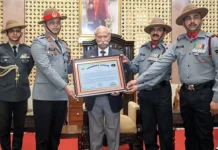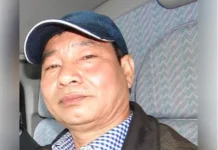[ Tani Language Foundation ]
“When will the script be ready?” is a question we at the Tani Language Foundation (TLF) hear constantly. Our answer is simple: Not yet. Writing systems cannot be slapped together on a whim; they must emerge from rigorous analysis, community consent, and careful testing. Indeed, scholars warn that ad hoc alphabets often fail to capture a language’s essence. For example, an informal Romanized ‘Padam’ orthography once proposed for some Tani tribes does not have the power to represent important contrasts… nor can it represent tones. Orthography is infrastructure of literacy and identity, not a beauty contest or vanity badge. We will not be rushed into releasing a script before it is truly ready, precisely because it must do justice to our languages and communities.
A writing system must emerge from scientific grounding and social processes. It isn’t enough to declare letters by decree or intuition. Orthography design should start with phonological analysis of each dialect: mapping the full inventory of sounds (including vowels, consonants, and tones) and understanding morphophonemic alternations. We then present provisional symbols to the community -elders, speakers, writers – and iteratively refine them. Each proposal must be field tested across dialects to ensure it works for the entire speech community.
Why is this exhaustive process necessary? Because a script isn’t art; it is a tool for education and heritage. A poor orthography can distort meaning and alienate speakers. Orthography must serve practical goals, not whims. It can unite our languages only if every community feels it is their script.
We have already seen what happens when a script is imposed from the top down. Tani Lipi, invented in 2001 by a single individual. is a striking example. Branded as ‘scientific’ and ‘indigenous’, Tani Lipi was a one-man project that lifted letters from other scripts. Notably, it uses the Sanskrit derived term lipi (script) even in its name – a glaring hint that this wasn’t an organically grown writing tradition. In fact, critics point out that many characters are borrowed or adapted from neighboring systems. As a unicode proposal observes that the 26 letters of Tani Lipi “resemble those of Bengali and Latin” despite having no true historical link to them. In other words, it patched together symbols from Devanagari/Bengali scripts and the Roman alphabet. This top-down design also ignores the realities of Tani phonology.Tani languages are morphophonemically complex and linguistic research over the years has moreover established the presence of lexical tones in many of the dialects (although a comprehensive knowledge of the status of tones is yet to be empirically established for all the varieties of Tani). Yet Tani Lipi made no provision for tone representation or the morphophonemic dynamics of the consonant and vowel sounds. It was essentially a one-size-fits-all alphabet (ostensibly for Galo mainly, and in limited contexts) that fails to represent crucial distinctions. The result was predictable: very limited acceptance. Although the inventor calls it scientific, there has been no field studies conducted, and no results of such studies were ever made public.
We can only view Tani Lipi as a cautionary tale. It has been called an amateur invention and a vanity project because it ignored method and consultation. By contrast, we argue forcefully that any enduring script must come from the ground up, not from a single vision.
We must emphasize: a script is not mere pride or decoration; it is part of our social and educational infrastructure. It underpins literacy, schooling, literature and intergenerational continuity. A flawed writing system can fracture that infrastructure. Is orthography about ego as to who gets credit – or about practicality? We say the latter. Any talk of maternal language pride is hollow if the script doesn’t fit the language. Aesthetics (nice shapes or clever names) matter far less than functionality. A script must reliably map sound to symbols. If it ignores tone, vowel length, or consonant clusters, it denies people an accurate written representation of their speech.
Recognizing all this, the TLF is doing things differently. We have embarked on a bottom up, empirical path. First, we are documenting dialects and their phonemes thoroughly. Team members and collaborators record vocabularies, grammar notes, and audio from each village, building up a phonological inventory of every Tani dialect. We are not guessing our sounds; we are mapping them. Second, we consult extensively with communities. Third, we plan to build testable models. We will circulate draft orthography charts for multiple dialects and revise them based on feedback. Importantly, we are also investing in digital infrastructure from the start. For instance, the TLF has teamed with the Living Tongues Foundation to create a ‘living dictionary’ for Tani languages. Under this project, currently we have been working on three Tani languages, viz, Galo, Mising and Nyishi, and plan to extend it to other Tani languages as well in the future. This online resource, compiled by linguists and community members, captures vocabulary, audio, and grammar. We are not imposing yet another readymade alphabet; we are co-creating one. This is how orthography should be: a common project, not a personal project. Credit at the end will be on the community, not the Tani Language Foundation.
We take inspiration from successful cases of careful orthography design. One shining example is Hangul, the Korean alphabet invented in 1443 under King Sejong. Hangul was not a random set of letters: it was “intentionally and scientifically constructed to reflect the sounds of Korean.” Its consonants were designed to mimic the shape of the mouth and throat when pronouncing them, and its vowels follow a simple logical scheme. The scholars of Sejong’s court consulted, experimented, and ultimately produced a system tailored to their language. The result was a radically accessible and powerful script that drove literacy.
We do not claim to match Sejong, but we adopt the principle: let science and consultation guide our script, not whim or vanity. We ask the same kinds of questions Hangul’s creators asked. For example: What are the native sounds of each dialect? How can we symbolize them clearly? And, critically, we circulate our findings among the people themselves for feedback. Most importantly, we aim to build our script with a holistic incorporation of contemporary linguistic research and phonetic fidelity. The script is not ready yet, and that is how it must be. This is not a delay tactic; it is a necessary discipline. Orthography creation is messy and slow by nature. It requires patience and the willingness to listen. We call on our people and our supporters to embrace that process. (The foregoing is a collective piece by members of the TLF)




